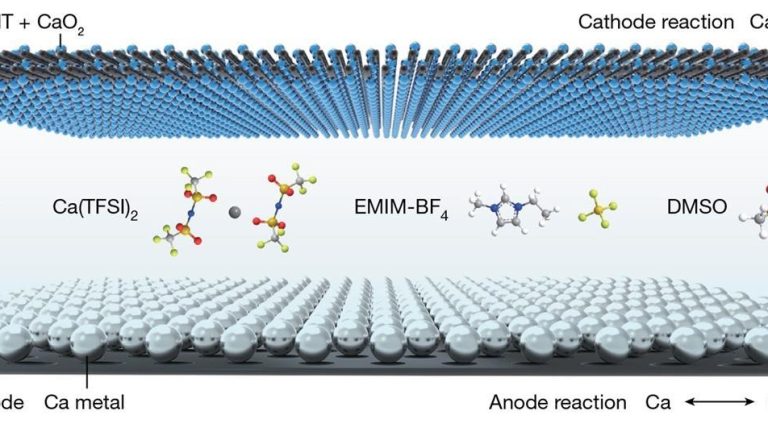A promising breakthrough in battery technology
The energy storage landscape is about to undergo a major transformation with the development of the game-changing rechargeable calcium oxygen (Ca-O2) battery. This innovative power supply uses calcium as the anode and cathode, and operates stably and reversibly at room temperature. Its unique feature is the highly efficient two-electron redox process that forms chemically reactive calcium peroxide (CaO2) as the discharge product. Thanks to its durability and easy stripping of the calcium coating, the battery features enhanced CaO2/O2 oxidation at the air cathode.
Why could calcium-oxygen batteries be the next big thing?
Calcium is the most abundant divalent metal on the planet, making it a more accessible and cost-effective material for battery technology. In addition, calcium has a large anode capacity, providing high energy storage potential. This new battery technology has demonstrated impressive performance, having been charged and discharged more than 700 times at room temperature in prototype tests.
The batteries are also flexible, making them suitable for integration into batteries for wearable electronics and textiles, a promising development for the growing wearable technology industry. Although their larger atomic radius and higher charge, which presents some challenges, the potential benefits of calcium batteries make them an exciting area of research and development.
Revolutionizing the electric car market
The advent of rechargeable Ca-O2 batteries could be a game-changer for the electric vehicle (EV) industry. For example, Toyota plans to launch a car by 2027-2028 that can travel 1,000 kilometers and recharge in just 10 minutes using a new battery type. The pursuit of better car batteries is fierce due to the surge in the electric vehicle market, and the introduction of calcium batteries could significantly impact this market.
Overcoming challenges with metal air batteries
Despite promising prospects, there are notable challenges related to metal air batteries (MABs), such as oxygen reduction and evolution reactions, interfacial stability, and current complexes. However, scientists are exploring strategies to mitigate these issues, including the use of 3D electrodes, oxygen-selective membranes, solid-state electrolytes, hybrid polymer electrodes, and conductive electrocatalysts. These developments are critical for the commercialization and widespread adoption of MABs.
Current status of battery technology
Currently, the electric vehicle market is dominated by lithium-ion batteries. However, they have their own set of challenges, including electrode and interface stability, structural stability, and gas emissions. The development of Ca-O2 batteries could address these issues while offering a cheaper and more energy-dense alternative. While the batteries are in the proof-of-concept stage and far from commercialization, advances in calcium battery technology are an encouraging step toward a more sustainable and efficient energy future.

